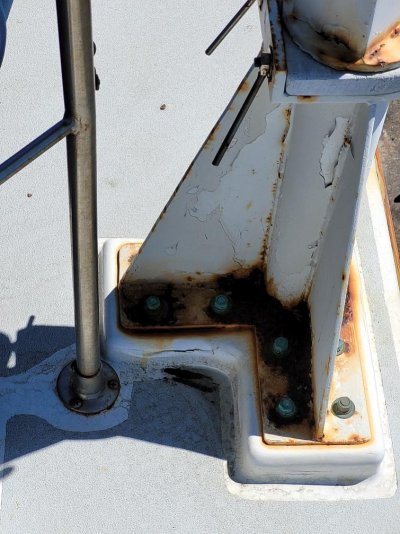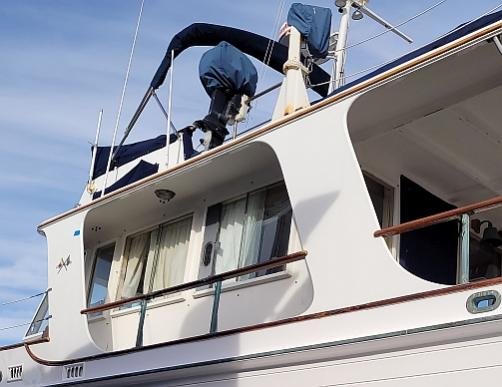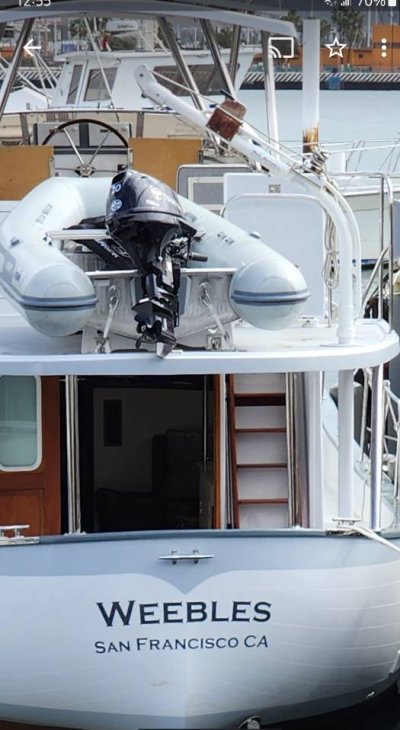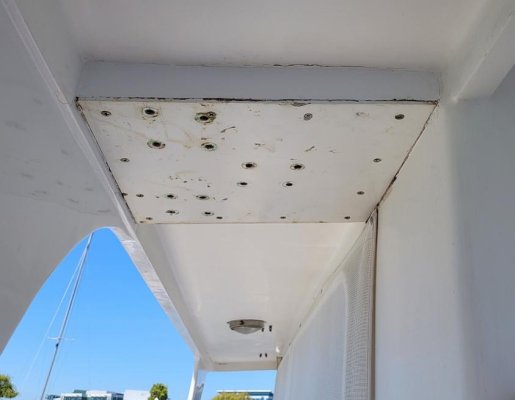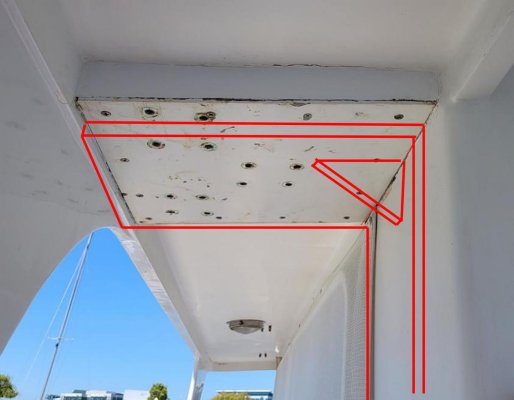MVCalypso
Veteran Member
- Joined
- Jun 13, 2010
- Messages
- 48
- Vessel Name
- Calypso
- Vessel Make
- Island Gypsy 36 Europa 1984
Hi,
For a few months now, I've been noodling about a dingy crane design project.
In December '22 I had to remove the dink crane from my boat as its mount started leaking into the saloon. That potential problem was averted. But not being able to carry or use the dink has become an annoyance. So I think I need to figure out a replacement.
No commercial products have held my interest yet (different reasons for diff products). So I'm leaning toward a custom design. Before I go further down the road that (currently) seems best, I'd like to tap into the group's experiences.
Attached is a intro write up of how I got to this point, what problems I'd like to solve, and what I've considered so far. This is a real world engineering problem; the functional desires are not trivial, the budget is not unlimited, and of course I'd now like to have it done yesterday.
I'll trade project time off for the other two - doing much of this DIY is part of the fun of the project to me.
If you're the type who likes to do arm chair design, I'd like to hear your inputs / commentary. Frankly, I'd love to hear "Did you consider ABC?", so I could respond with "Heck, no I didn't, that's a fabulous idea!".
Any takers?
For a few months now, I've been noodling about a dingy crane design project.
In December '22 I had to remove the dink crane from my boat as its mount started leaking into the saloon. That potential problem was averted. But not being able to carry or use the dink has become an annoyance. So I think I need to figure out a replacement.
No commercial products have held my interest yet (different reasons for diff products). So I'm leaning toward a custom design. Before I go further down the road that (currently) seems best, I'd like to tap into the group's experiences.
Attached is a intro write up of how I got to this point, what problems I'd like to solve, and what I've considered so far. This is a real world engineering problem; the functional desires are not trivial, the budget is not unlimited, and of course I'd now like to have it done yesterday.
I'll trade project time off for the other two - doing much of this DIY is part of the fun of the project to me.
If you're the type who likes to do arm chair design, I'd like to hear your inputs / commentary. Frankly, I'd love to hear "Did you consider ABC?", so I could respond with "Heck, no I didn't, that's a fabulous idea!".
Any takers?

